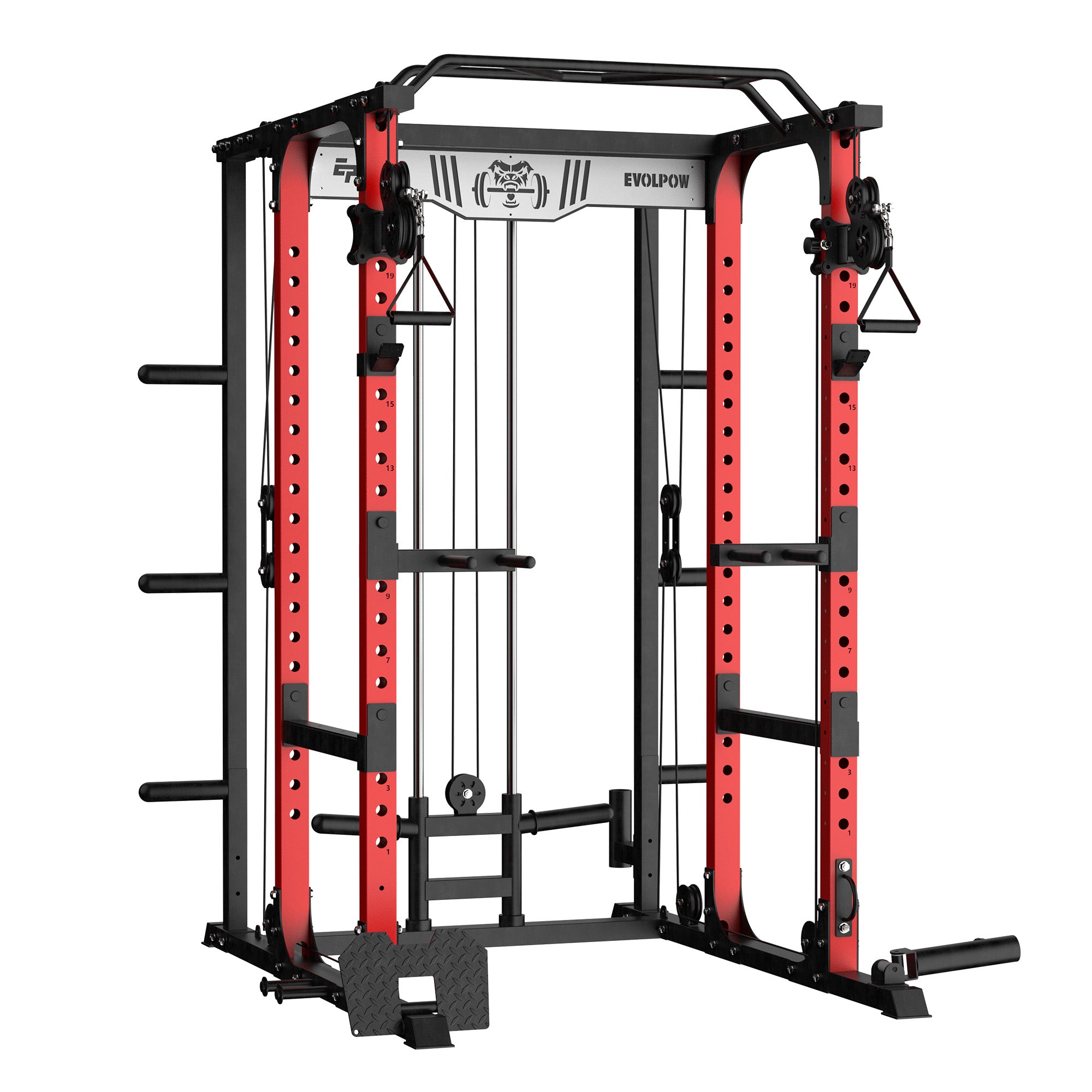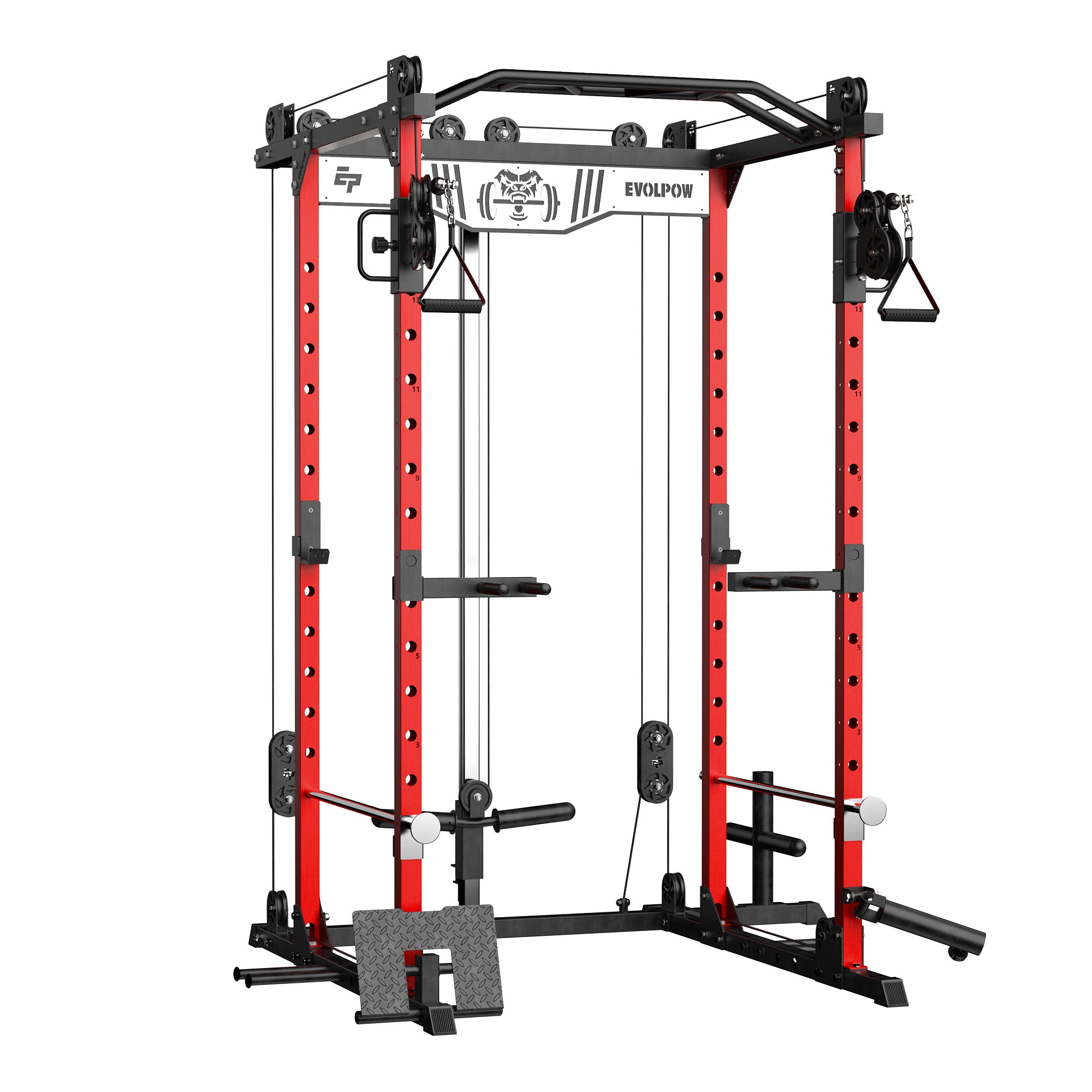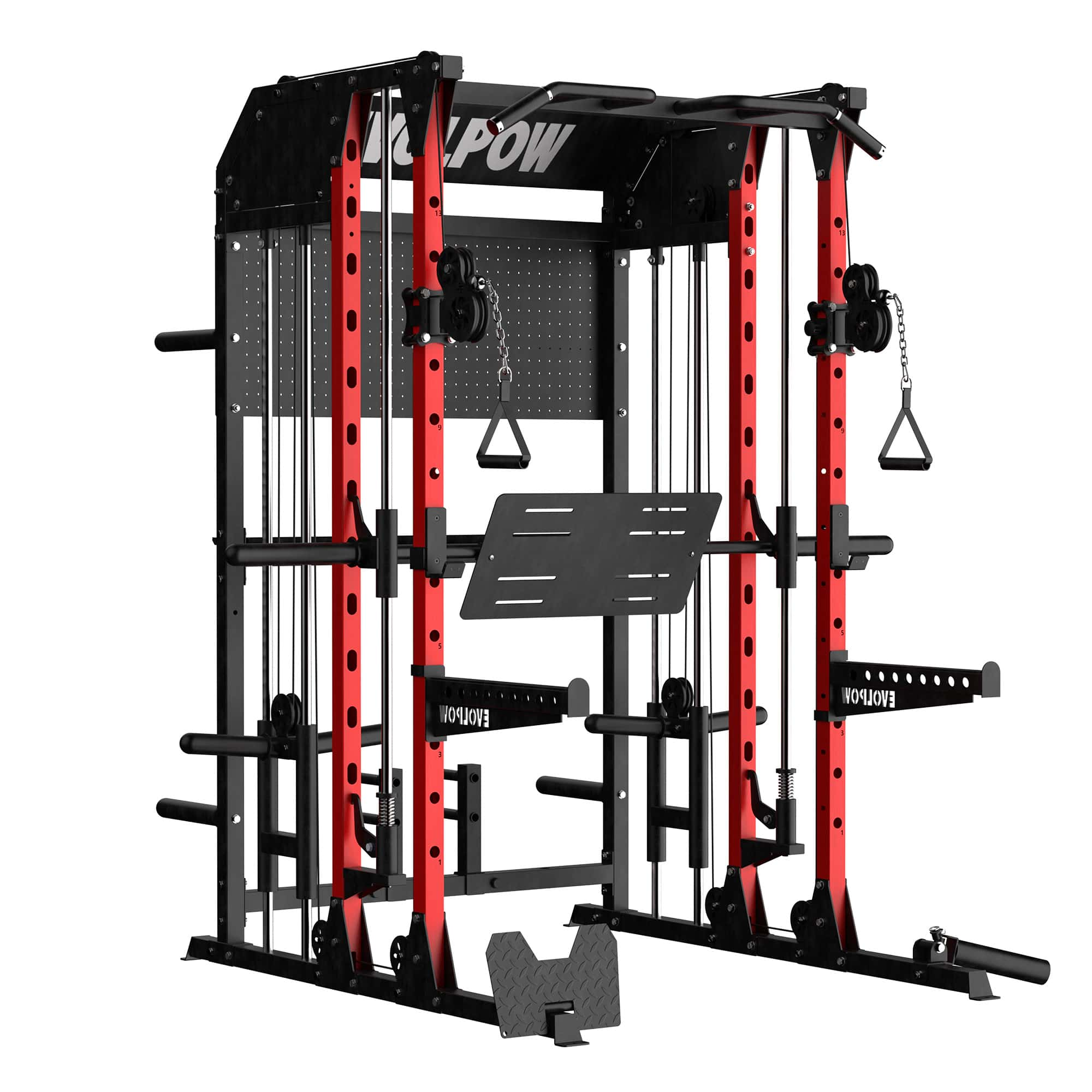Want to enjoy the thrill of home gym but worry about the risk of injury? Don't be afraid! In home fitness, mastering the right posture and technique is essential for a safe and effective exercise routine. From choosing the right fitness equipment to understanding the secrets of moderate training, let's delve into how to avoid injury, maximize fitness results, and fully enjoy the joy and accomplishment of home work out.
Content
- The 3 most common home workout injuries
- Tips to Prevent Home Workout Injuries
- Finally summarize
The 3 most common home workout injuries
Falls and collisions
When doing high-intensity exercise at home or using equipment, it is easy to fall or crash due to loss of balance, unstable support surfaces or inaccurate movements. For example, if the ground is not smooth when jumping rope or the posture is not correct when jumping, it is easy to sprain, fall and other accidents. Weight training with too much weight or incorrect posture can lead to muscle strains, joint injuries and other problems.

Fatigue and muscle strain
Excessive pursuit of training results, sustained high-intensity exercise for a long time or lack of proper rest, easily lead to muscle fatigue and strain. For example, long periods of continuous strength training or uninterrupted high-intensity aerobic exercise can lead to muscle overuse and increase the risk of muscle strain. If the squat exercise posture is not correct or the weight is too large, it can increase the pressure on the knees and waist, resulting in injury.

Injuries caused by posture errors
Incorrect posture, excessive exertion or lack of proper guidance and guidance can lead to joint sprains, muscle strain and other injuries. When training with equipment at home, if the position or weight of the equipment is not properly adjusted, it can easily lead to muscle injury or joint discomfort. Understanding the possible risks associated with a particular sport can help to be more alert to exercise and take appropriate precautions to avoid injury.

Tips to Prevent Home Workout Injuries
Plan training plan reasonably
Set clear goals and plans: Set clear fitness goals, such as gaining muscle, losing fat, or increasing flexibility, and determine how often, how long, and what you train each week based on those goals.
Gradually increase the intensity of exercise: Avoid excessive efforts to cause injury, you should gradually increase the intensity of exercise, give the body enough time to adapt.
Regular adjustment plan: Monitor your progress and flexibly adjust your training plan based on physical feedback and target progress to ensure continuous progress.
Correct posture and movement
Learn proper posture: Learn proper posture through professional tutorials, videos or coaches to ensure accurate movement and avoid injuries caused by wrong posture.
Focus on how the muscles feel: During exercise, focus on how the muscles feel to ensure that the right muscle groups are exerting force and avoid unnecessary stress on the joints.
Control the amplitude and speed of the movement: avoid excessive distortion of the joint or excessive force, control the amplitude and speed of the movement, and keep the movement stable and smooth.
Warm up and stretch properly
Dynamic warm-up: Do dynamic warm-up activities, such as running or dynamic stretching, to raise your body temperature and increase blood circulation to prepare your body.
Static stretching: Performing static stretching at the end of a workout stretches major muscle groups, maintaining muscle softness and reducing the risk of muscle soreness and strain.
Choose the right equipment.
When choosing suitable equipment for home workouts, here are some common and beginner-friendly examples:
1.Dumbbells: Dumbbells are versatile equipment that can be used for upper and lower body training, such as dumbbell curls and squats.

2.Yoga mat: A yoga mat provides comfortable support and anti-slip properties, making it useful for practicing yoga, stretching, and core training at home.

3.Jump rope: Jump rope is a simple yet effective aerobic exercise equipment that can help improve cardiovascular fitness and coordination, suitable for short, high-intensity training sessions.

3.Resistance bands: Resistance bands are lightweight and convenient equipment that can be used for various strength training exercises, such as hip bridges and side leg raises.

4.Balance ball: A balance ball can help strengthen the core muscles and improve balance, suitable for balance training and core stability exercises.

5.Weight scale: While not a direct exercise equipment, a weight scale can help you monitor weight changes, adjust diet and exercise plans, and maintain a healthy lifestyle.

These are just a few examples, and the best equipment for you will depend on your specific fitness needs and interests. Always choose equipment that aligns with your goals and motivates you to stay consistent with your workouts.
Listen to your body's signals
Respect the body: If you feel pain, discomfort or excessive fatigue, you should stop training immediately and give your body sufficient rest and recovery time.
Don't push yourself: Don't force yourself to complete a certain exercise, respect body signals, avoid causing more damage, and protect your health. For example, you can set specific goals like getting 45 minutes of aerobic exercise at least three times a week or completing a half marathon in the next six months. Writing your goals down and posting them in a visible place will help you remember them and motivate you to stick to them.
Conclusion
In conclusion, it is crucial to prevent injuries while exercising at home. By properly planning training schedules, maintaining correct postures and movements, warming up and stretching appropriately, choosing suitable equipment and venues, and heeding the body's signals, the risk of injury can be effectively reduced, ensuring safe and healthy exercise.
However, despite taking various preventive measures, the possibility of accidental injury cannot be completely eliminated. Therefore, when engaging in any form of exercise or workout, it is essential to prioritize personal safety and seek professional guidance and supervision when necessary. Remember, health is always paramount, so do not ignore your body's warning signals in pursuit of exercise results. Exercise caution and prudence, enjoy the benefits of healthy physical activity, and let exercise promote well-being rather than pose a risk of harm. Wishing you safe and healthy achievement of your fitness goals during home workouts!
Q&A
Q: Should I keep working out with injury?
A: If you are injured, the most important thing is to rest and let your body recover first. Don't force yourself to continue exercising to avoid aggravating your injury. Follow your body's advice and wait until the injury is better before slowly returning to exercise. Take care of yourself, health is the most important!
Q: Can exercise prevent us from getting hurt
A: Of course you can! Exercise can help us become stronger and more flexible, thus reducing the risk of injury. Doing proper exercise can make our bodies healthier and strengthen our muscles and joints, so that we can better prevent injuries! So, go ahead and exercise, but remember to choose the right type of exercise for you and arrange your training plan properly!
Q: How do I keep up my motivation to work out?
A: If you don't warm up before exercising, you may increase the risk of getting injured during the workout. Warming up helps to raise body temperature, improve blood circulation, and increase muscle elasticity, reducing the stiffness of muscles and joints to prevent strains and sprains. So, before engaging in any intense physical activity, remember to do some simple warm-up exercises like jogging or stretching to gradually prepare your body for the workout and protect yourself from accidental injuries.
Reference
Preventing Injuries While Working Out at Home (hss.edu)
How to Prevent Falls at Home | HSS
Tips for Working Out at Home (verywellfit.com)
10 Tips to Prevent Injury While Training! (youtube.com)






